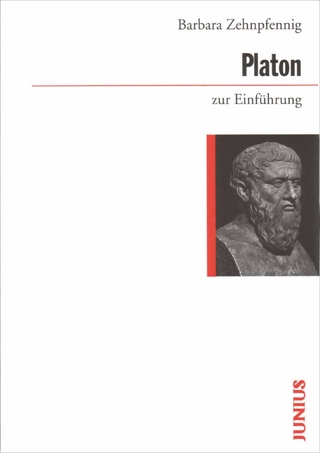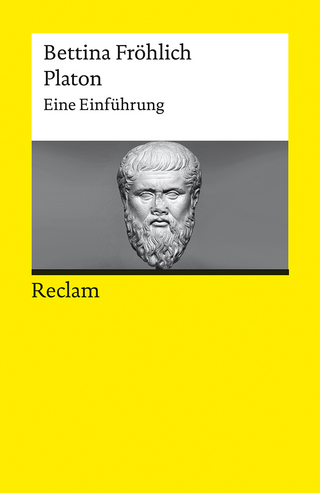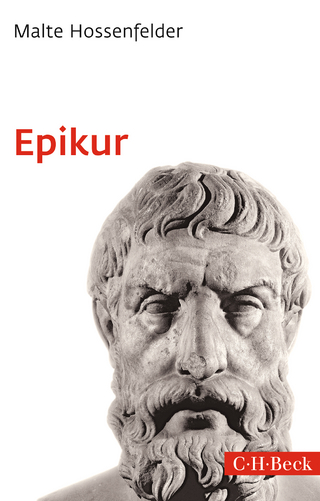
Topography and Deep Structure in Plato
State University of New York Press (Verlag)
978-1-4384-6270-7 (ISBN)
In this book, Clinton DeBevoise Corcoran examines the use of place in Plato's dialogues. Corcoran argues that spatial representations, such as walls, caves, and roads, as well as the creation of eternal patterns and chaotic images in the particular spaces, times, characterizations, and actions of the dialogues, provide clues to Plato's philosophic project. Throughout the dialogues, the Good serves as an overarching ordering principle for the construction of place and the proper limit of spaces, whether they be here in the world, deep in the underworld, or in the nonspatial ideal realm of the Forms. The Good, since it escapes the limits of space and time, equips Plato with a powerful mythopoetic tool to create settings, frames, and arguments that superimpose different dimensions of reality, allowing worlds to overlap that would otherwise be incommensurable. The Good also serves as a powerful ethical tool for evaluating the order of different spaces. Corcoran explores how Plato uses wrestling and war as metaphors for the mixing of the nonspatial, eternal forms in the world and history, and how he uses spatial images throughout the dialogues to critique Athens's tragic overreach in the Peloponnesian War. Far from merely an incidental backdrop in the dialogues, place etches the tragic intersection of the mortal and the immortal, good and evil, and Athens's past, present, and future.
Clinton DeBevoise Corcoran is Professor of Religion and Philosophy at High Point University.
List of Figures
Acknowledgments
Introduction. Plato’s Esoteric Conception of Space
Physical Space and Narrative Space
Depth and Surface
Plot and Settings
Historical Space and the Canon
1. Descent into the Maelstrom
The Republic, the Oracle of Trophonius, and the Peloponnesian War
The Long Walls
The Cave
The Opening of the Republic and the Oracle of Trophonius
The Oracle of Trophonius
Socrates as a Leader of Souls
The Myth of Er
2. The Menexenus, Socrates, and the Battle of Arginusae
Dead Souls
The History of Athens
The Battle
The Trial
The Anachronism
The City of the Dead
3. The Symbolism in the City Plan of Plato’s Atlantis
The Present Past and Past Present
Intentional Incompleteness?
The Circuit Walls of Atlantis
Oreichalkos and Platonic Metallurgy
Geomancy
4. The Slow Boat from Delos, or Socrates’s Ship Comes In?
Which Ship Is That?
The Woman in White
Reenactment: Saving Athens Again
Socrates and Divination
Such Stuff as Dreams Are Made On
The Delia
5. Wrestling and the Fair Fight in Plato
Plato’s View of Wrestling
Wrestling for Phaedrus
Lysis: Wrestling as an Enactment of Philosophic Dialogue
The Republic: Thrasymachus as Pankratist
Wrestling, Dialectic, and Authenticity
Theomachia: Calliope versus Aphrodite in Plato’s Philebus
War and Remembrance
War, Conflict, and the Good
6. The Good as Architectonic
Alcibiades’s Eccentric Orbit of the Good
The Allegory of the Cave and the Myth of the True Earth
The Good as Architectonic
Interdimensionality
Notes
Bibliography
General Index
Index of Names
Index Locorum
| Erscheinungsdatum | 16.03.2018 |
|---|---|
| Reihe/Serie | SUNY series in Ancient Greek Philosophy |
| Zusatzinfo | Total Illustrations: 12 |
| Verlagsort | Albany, NY |
| Sprache | englisch |
| Maße | 152 x 229 mm |
| Gewicht | 227 g |
| Themenwelt | Geisteswissenschaften ► Philosophie ► Philosophie Altertum / Antike |
| Sozialwissenschaften | |
| ISBN-10 | 1-4384-6270-0 / 1438462700 |
| ISBN-13 | 978-1-4384-6270-7 / 9781438462707 |
| Zustand | Neuware |
| Haben Sie eine Frage zum Produkt? |


